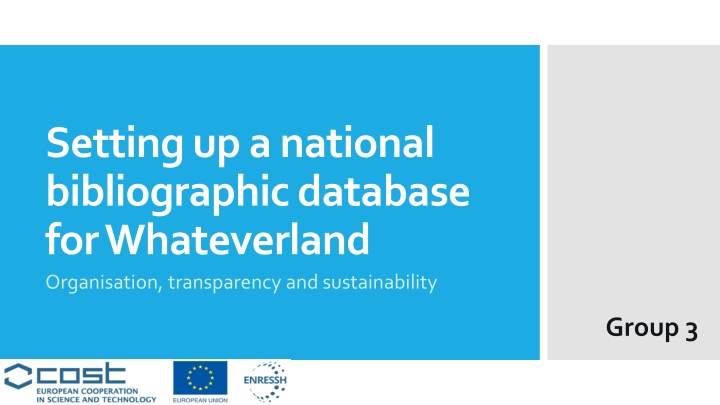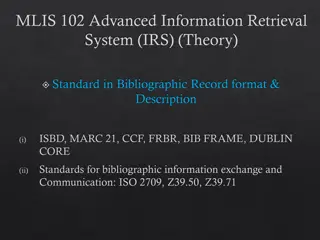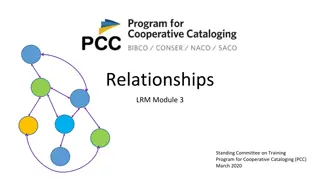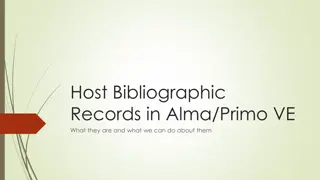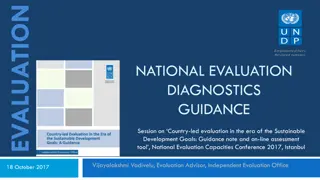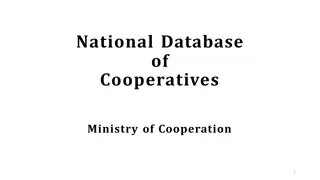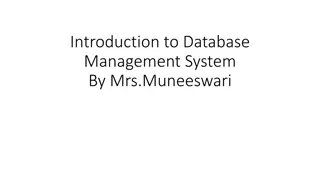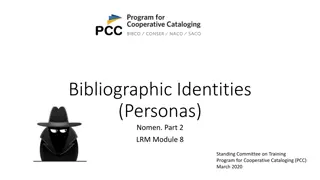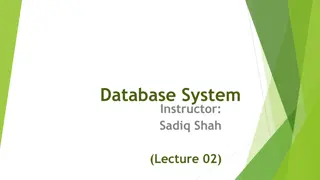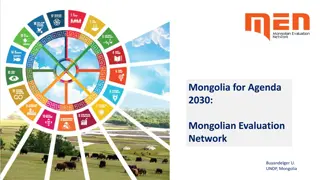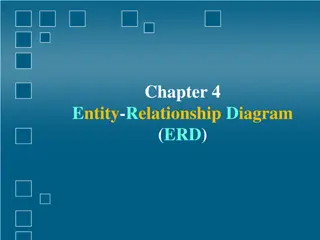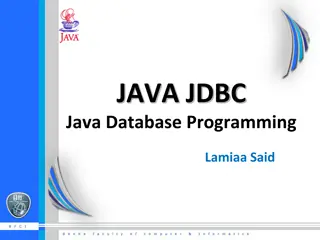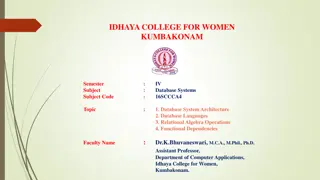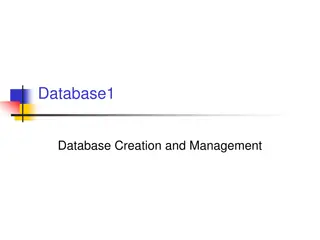National Bibliographic Database for Sustainable Research Evaluation
Setting up a national bibliographic database in Whateverland for research evaluation purposes, open to all users for information discovery. The database aims to support transparency and sustainability in research activities funded by the ministry for promoting national identity. Collaboration with stakeholders including the academic community, government, and funding agencies is essential for successful implementation. Roles and responsibilities in maintaining the database are specified, with technical maintenance by the National Library and data input from academic libraries. Embedding the database in a national legal framework ensures accurate and up-to-date data for research evaluation regulation.
Download Presentation

Please find below an Image/Link to download the presentation.
The content on the website is provided AS IS for your information and personal use only. It may not be sold, licensed, or shared on other websites without obtaining consent from the author.If you encounter any issues during the download, it is possible that the publisher has removed the file from their server.
You are allowed to download the files provided on this website for personal or commercial use, subject to the condition that they are used lawfully. All files are the property of their respective owners.
The content on the website is provided AS IS for your information and personal use only. It may not be sold, licensed, or shared on other websites without obtaining consent from the author.
E N D
Presentation Transcript
Settingupa national bibliographicdatabase for Whateverland Organisation, transparency and sustainability Group 3
Whateverland Once upon a time
Population: 10 million Language(s): 4 local languages Universities: 10 Number of researchers: 20 000 Publications: 40 000 per year GDP: 251,9 billion USD Whateverland
National bibliographicdatabasefor researchevaluationpurposes, butopen for allusers (informationdiscovery) Centralizeddatabase Why: Research funded bythe ministry -> they needinformation on research output in local languages to promote thenational identity Ministry wants to control and establish the rules for how the data of research output is provided in order to allocate the funding Database weare settingup
7. Collaboratewith stakeholders Identification of stakeholders: academic community (researchers, universities, research institutions), administrative staff, government, funding agencies, libraries, general public Consulting the stakeholders ( hourglass model ): Online surveyopen to all Workshopsfor expertgroups(academiccommunity, administrators, endusers) Open commenting Consulting the stakeholders ( pyramid ) Workshopsfor expertgroups Open commenting ORGANISATION
8. Specify roles and responsibilities in the maintenance of the database Technical maintenance: National library Data input: Academic libraries Imports from variousdatabases (National library) Qualitycontrol: Content curation (National library) Vocabularies, authority control and identifiers (National library) ORGANISATION
9.Embed the national database in a national legal framework Regulationof researchevaluation requiresaccurateup-to-datedata on researchoutput Regulationdefinesthemain responsibilitiesfor maintenanceof the database ORGANISATION
27. Encourage feedback from users and other stakeholders Service team at the National library (help desk) helping the academiclibraries replying to requests sent by e-mail Organising live sessions, seminars, workshops Designated e-mail address (reporterrors, notifications about missing data, suggestions for improvement etc.) TRANSPARENCY AND SUSTAINABILITY
28. Provide up-to-date documentation about the database, its purpose, envisioned uses, limitations, and other aspects Instructions page (both national languages and in English) with up-to date and regularly reviewed information on Policy background Database purposeand limitations Database sourcesand informationsources Quality controlprocedure User guides(videos) Q&A TRANSPARENCY AND SUSTAINABILITY
29. Implement procedures for data provenance Data provenance/ systemlevel Publicly available and updated documentationwhere data provenance is outlined Information on: Input, process, transfer, user rights TRANSPARENCY AND SUSTAINABILITY Data provenance/ recordlevel If possible: permanentlinks to original data Change log
30. Follow and adapt to development in research practices, research policy, and database maintenance Modelthe database/ data provenanceprocedures accordingto existingregulationson science evaluation Databasemaintenance Regular updating of data Regular assessment of data sources(adding/removing) Hire(and keep!) a goodIT team Stay up-to-datewith regluationsof ResearchData Management Plans TRANSPARENCY AND SUSTAINABILITY
Kiitos Thanks Gracias Multumesc Dzi kuj Danke Hannia Gonzalez Urango Christoph Thiedig Eeva Savolainen Irina Cojocaru Tomasz Umerle Jiangtian Xu
